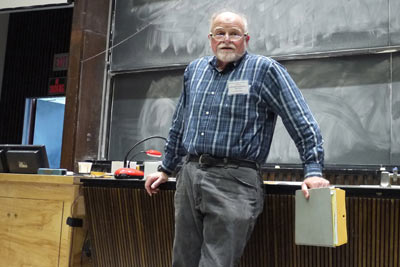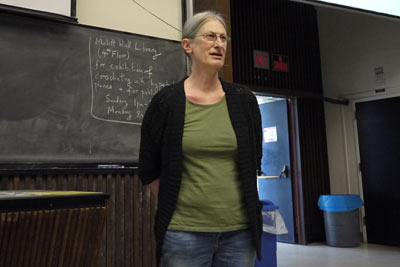Math department celebrates 50th year of topology festivals
By Linda B. Glaser


In honor of the 50th consecutive gathering of topologists at Cornell, more than 200 mathematicians and students, two to three times the usual total, attended the 50th Topology Festival May 4-7 at Cornell. Fields Medalist John Milnor of Stony Brook University has been coming to Cornell's conference almost since its inception. He opened the conference with a Lewis Carroll-inspired through-the-looking-glass view of dynamics and the topology of fractals. Cornell's own Fields Medalist, William Thurston, the Jacob Gould Schurman Professor of Mathematics, also gave a talk, about his most recent work.
"The strength of the department in topology is widely recognized worldwide because of Bill Thurston, who is a giant in mathematics, and because of this conference among other things," said math chair Laurent Saloff-Coste. "Topology is an area in which Cornell has been a very important part for all 50 years." He speculated that Cornell's Topology Festival may be the longest running annual conference on a specific topic in math in the United States. "It's very impressive that we've been able to create and maintain the tradition of this conference for 50 years."
The conference featured speakers who had recently made outstanding breakthroughs in the field, including Ian Agol of the University of California-Berkeley, who proved the Virtual Haken Conjecture. "It was a celebration of the end of an era in 3-manifold topology," said festival organizer Timothy Riley, assistant professor of math, "and a vindication of a far-reaching vision for 3-manifolds set out by Bill Thurston in 1982. So it's particularly poignant for us at Cornell."
The festival also included a picnic at Stewart Park, a reception and numerous instances of spontaneous juggling.
The festival was supported by the National Science Foundation, as it has been every year. The conference organizers also noted the support of prize donator Acme Klein Bottle, which they described as "purveyors of the finest closed, non-orientable, boundary-free manifolds sold anywhere in our three spatial dimensions."
Linda B. Glaser is staff writer for the College of Arts and Sciences.
Get Cornell news delivered right to your inbox.
Subscribe